"The Lord cast down great stones from heaven upon them"Rocks that fell from the sky were often venerated in ancient times and even became objects of worship. Visitors to the temple of Apollo at Delphi, for example, reported that a stone, reputed to have fallen from the sky, was on display there and each day was anointed by the resident priests.
Joshua 10:11
So the ancient Greeks knew that stones could, and did, fall from the sky. They used observation, common sense and the genuine power of reason to establish this. Rocks and stones that fell to the ground were not really falling stars they reasoned, because the celestial population of stars remained the same.
Aristotle, however, the great Greek philosopher, was one who at first wholeheartedly debunked this concept. He thought that rocks could not fall from the sky because the heavens were perfect and could not possibly have loose pieces floating around to fall to Earth. Aristotle was forced to change his position somewhat after a meteorite fell at Thrace near Aegospotami. He reasoned that strong winds had lifted an earth rock into the sky, then dropped it. Other learned men of the time favoured an alternate theory. They held that meteorites somehow formed in the sky during violent thunderstorms, suggesting that particles inside the clouds consolidated because of the heat during a lighting flash. For this reason the rocks were sometimes referred to as thunderstones.
Despite the varying views, a consensus was somehow arrived at. Being a temporary phenomenon, it was agreed, shooting stars had to be something within the atmosphere. These objects were therefore named Meteors meaning 'things in the air'.
'Age of Reason' and 'The Enlightenment', roughly within the 18th century, were terms used and cherished by those who believed in the power of mind to liberate and improve. Reviewing the experience in 1784, Immanuel Kant saw emancipation from superstition and ignorance as having been the essential characteristic of these times. Philosophers and scientists alike pursued these ideals with enthusiasm and vigour and especially so the Académie Française des Sciences, Europe's leading rational authority. To them may be attributed a strange anomaly that exists in the world today - in museums and collections there is scarcely a single specimen of meteorite that predates the year 1790.
The idea that stones can fall out of the sky was scornfully denounced by the Académie as an unscientific absurdity. Antoine Lavoisier, for example, the father of modern chemistry, told his fellow Academicians, "Stones cannot fall from the sky, because there are no stones in the sky!" The concept of meteorites was thus condemned as nothing but medieval illusions and old wives' tales. Embarrassed museums all over Europe, wishing to be seen to be part of this enlightened 'Age of Reason', hurriedly threw out their cherished meteorite collections with the garbage as humiliating anachronisms from a superstitious past.
Although the last two decades of the eighteenth century saw scientists such as Peter Pallas and Ernst Florens Chladni, risking ridicule by the scientific community through the serious investigation of meteorites, most scientists shared Isaac Newton's view that that no small objects could exist in the interplanetary space. An assumption that left no room for rocks or stones falling from the sky.
Farmers who came to the Académie with samples of meteorites were laughingly shown to the door and denounced as superstitious ignorant peasants. On the night of the 26th of April 1803 however, perceptions started to change. On that night the people of L'Aigle were rudely awoken from their dreams by the thunderous noise of more than 2000 rocks falling from the sky. This undeniable display of meteorites also woke up the Académie Française who were compelled to take notice. They appointed a commission to investigate the event, the result of which was finally a reluctant admission that stones could indeed fall from the sky. Museums, freed from the stigma of non-conformity , started creating meteorite collections once again.
Strangely perhaps, American science did not wholeheartedly accept the Académie's findings until many years later. When, for example, in 1807, two Connecticut Scholars (one of them the chemist Benjamin Silliman) reported having witnessed a fall, President Thomas Jefferson (who had studied natural sciences) made a memorable statement. "I would sooner believe that two Yankee professors would lie than that stones would fall from heaven!" As in Europe it took a dramatic heavenly display, the 1833 Leonid Meteor Shower, before the American Astronomers turned to the subject of meteors and meteorites with any seriousness.
So science eventually learned to accept the idea that rocks, sometimes very very big rocks - could fall from space. The notion of thunderstones forming within the earth's atmosphere was relegated to the rubbish can of folklore. But not quite, because even in recent times reports of stones falling to the ground during heavy thunderstorms still occasionally occur as this report from the March 14, 1920 issue of Nature indicates:
"During a heavy thunderstorm which ensued on Monday, March 4, between 2:30 p.m. and 4.15 p.m., an aerolite was observed to fall at Conleny Heath, near St. Albans. The observed who has placed the specimen in my hands for examination, stated that the stone fell within a few feet from where he was standing, and that it entered the ground for a distance of about 3 feet. Its fall was accompanied by an unusually heavy clap of thunder. The example weighs 5 pounds 14 1/2 ounces and measures 6 3/4 inches by 5-5/8 inches at its great length and breadth respectively. The mass is irregularly ovate on the one side, and broken in outline on the other. The actual surface throughout is fairly deeply pitted, and under magnification exhibits the usual chondritic structure of the crystalline matter with interspersed particles of what appears to be nickeliferous iron."The author of the report, G.E. Bullen, submitted the stone to the British Museum where it was examined and astonishingly, determined not to be of meteorite origin. Did they mean that thunderstones really do exist then? Science once ridiculed the concept of meteorites. Perhaps sometime in the future they may prove to be wrong about thunderstones also. That's not very likely though.
There are many strange things in the world today that ordinary and credible people in their millions report on a daily basis, only to be denounced as lies and illusions by our equivalents of the "Age of Reason's' Académie Française. Denouncements without genuine scientific investigation are indicative of vested interest and closed minds.
"A man is wise with the wisdom of his time only, and ignorant with its ignorance." - Henry David Thoreau.The Ellerslie Meteorite
At 9.30 am on 12 June 2004 a meteorite smashed into the roof of the Archer family home in Elleslie, Auckland. After punching a hole through the roof the meteorite penetrated the family's couch bouncing around the living room before coming to rest.
The 1.3kg, 4600 million-year-old meteorite, identified as a Eucrite - a class of stone meteorite, must have travelled hundreds of millions of kilometres to reach Earth. A journey that would have begun millions of years ago. It now can be viewed in the Auckland museum.
Click here to view a video clip of Brenda Archer talking about the experience (link will open in a new window).
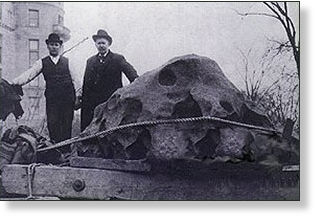
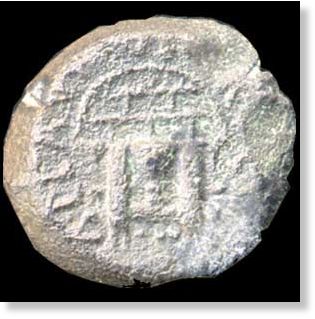
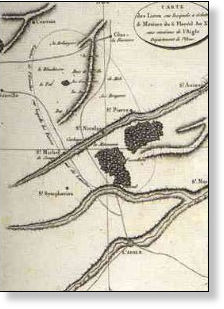
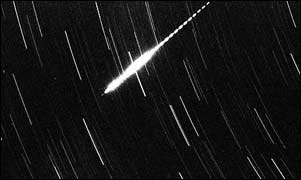
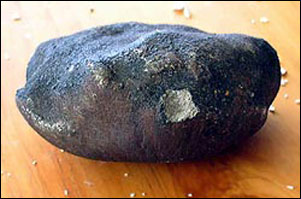
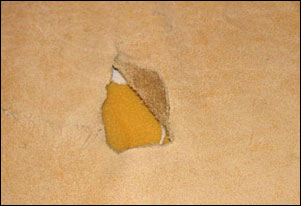
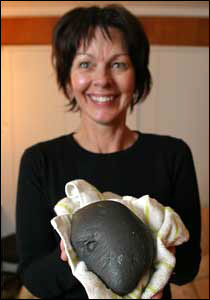



Reader Comments
to our Newsletter